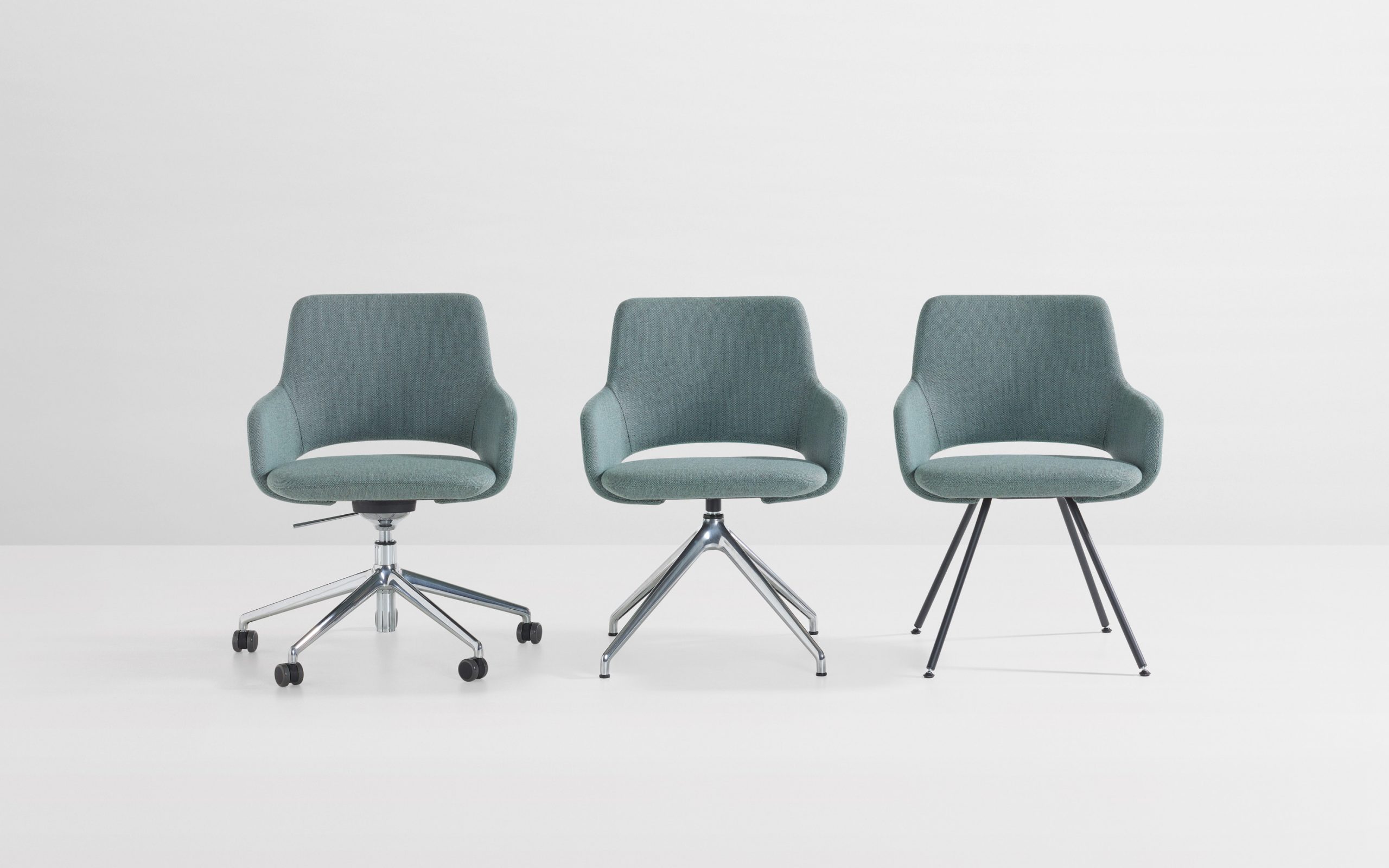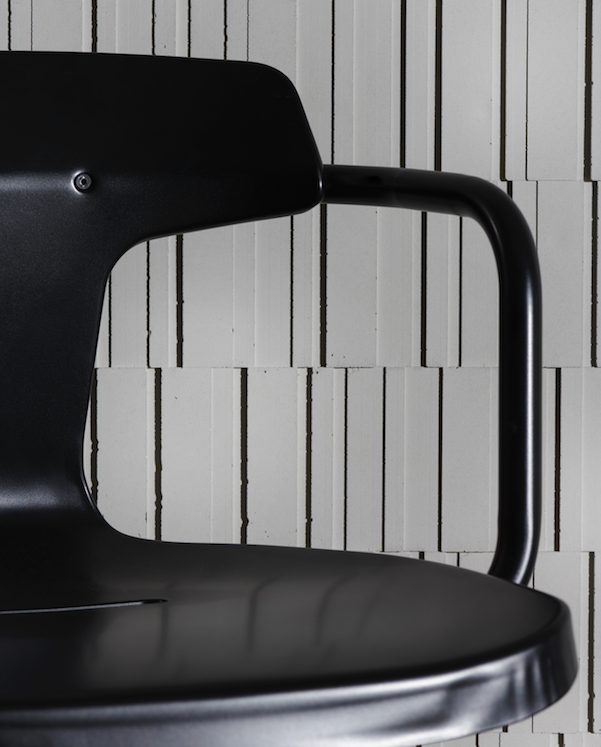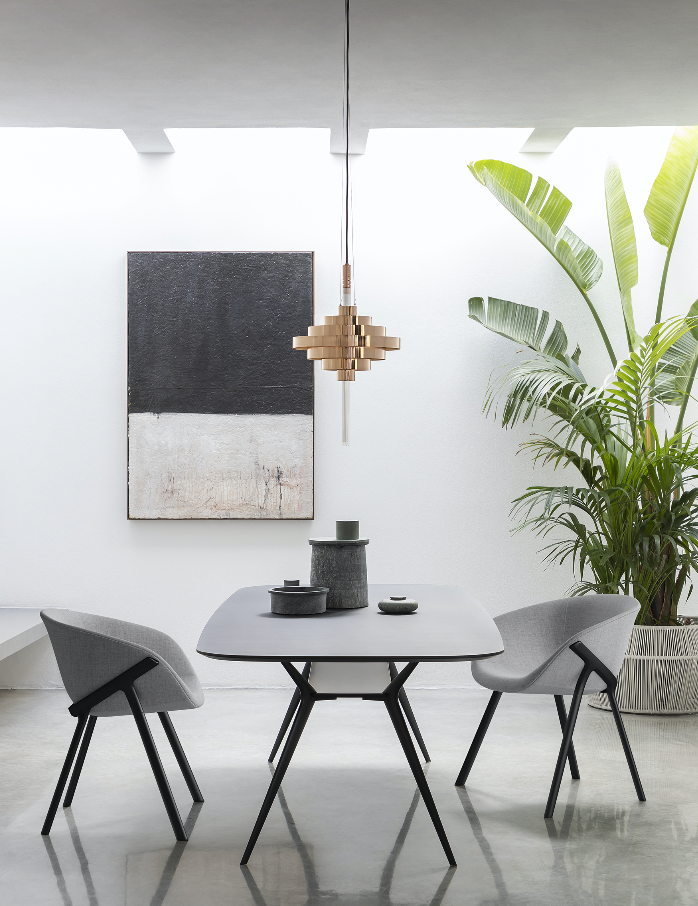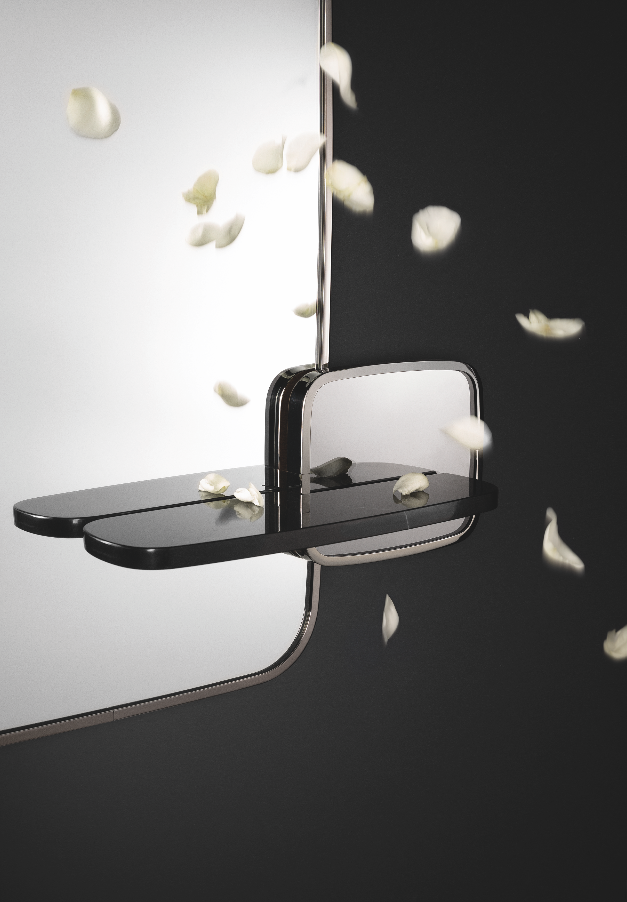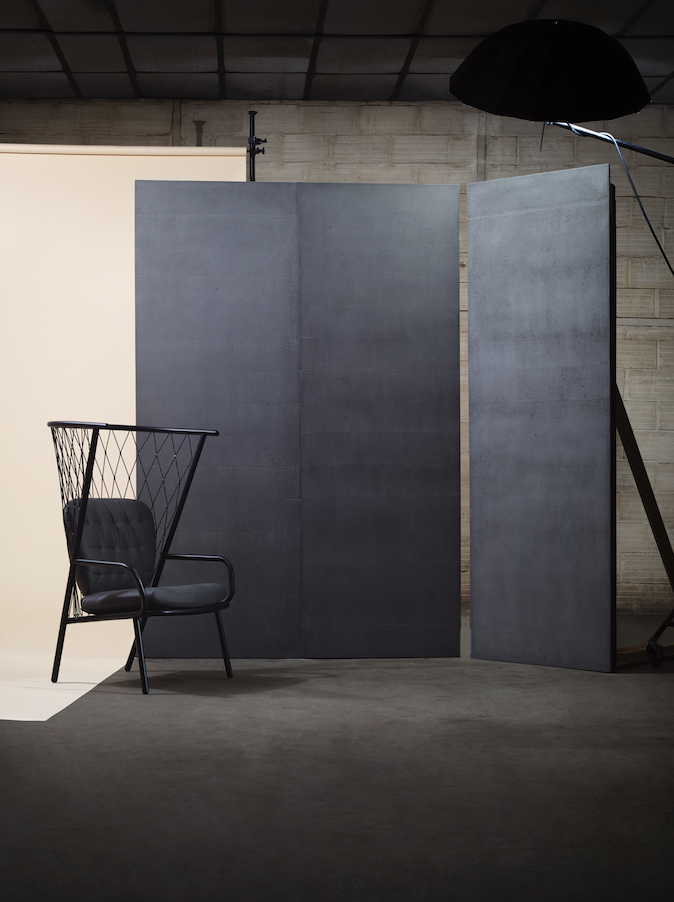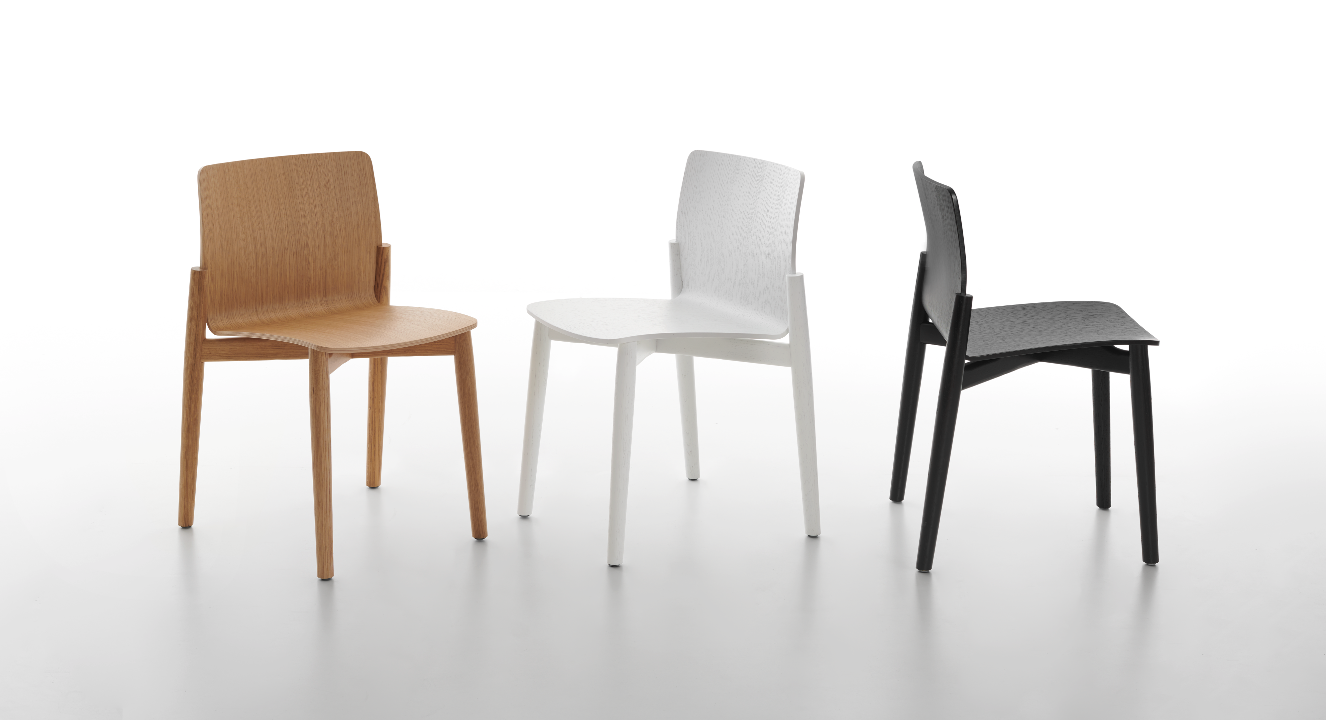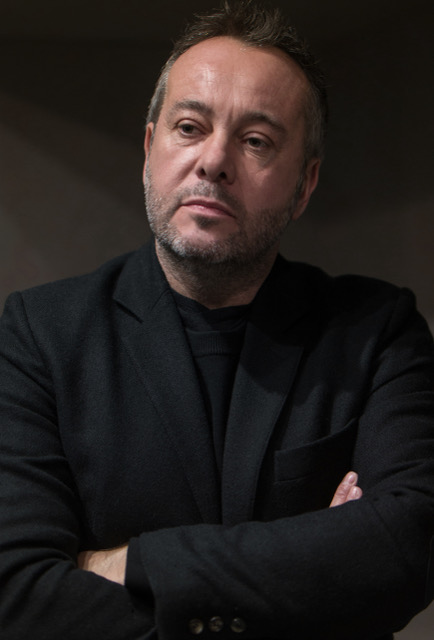Patrick Norguet approaches objects and design from a graphical perspective. Since childhood, he has preferred sketchbooks to textbooks, filling them up with sketches and drawings. A “hands-on” approach of industry and design studies in Paris (ESDI) mark the unusual profile of this constructive rebel. His career underwent a dramatic change in 2000 when Giulio Cappellini spotted his now famous Rainbow Chair. He joined the circle of designers that matter and created his Parisian studio. Since that time, he has been designing for major producers and renowned brands. For Patrick Norguet, design is first and foremost about happy encounters. What he is most passionate about is exchanging with manufacturers, discovering their know-how; the impulse of a creative intention refined by technical constraints, economic stakes and the expectations of a user whom he hopes to discreetly but durably win over.
Drawing inspiration from everything that surrounds him, Patrick Norguet does not follow trends but seeks to give shape to products whose relevance and modernity would withstand the test of time: “A well-designed object, an object created through generous collaboration is timeless.” From consumer products to luxury objects, Patrick Norguet leaves an impression of authenticity and elegance. Today, he is an essential figure on the international design scene.
ART BOOK / DIALOGUES
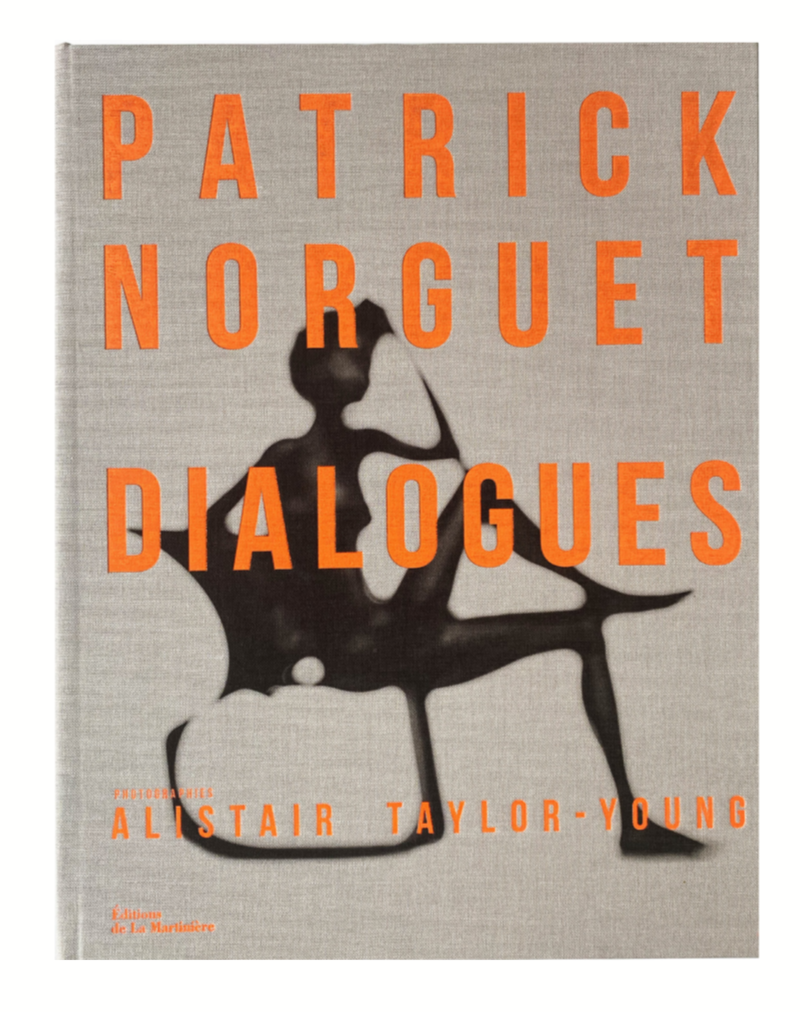
Patrick Norguet has spent 20 years creating but also designing, naming, baptizing objects, meeting people, friends, craftsmen and exchanging know-how, processes that today allow us to share a story, that of the products he designed, around a book Dialogues .
This Art book presents a nice selection of 50 his creations which “talk about design in the English sense of the term” according to Patrick Norguet. The photographer Alistair Taylor-Young supports him throughout this artistic exercise: a photographic work at the crossroads of a set of disciplines.
It is therefore a singular narrative that sensitively translates his relationship to beauty and shed light on the various aspects of his work: design, sculpture, drawing, forms, materials and industry.
This 216-page book, with a print run of 6,000 copies, will be available in French (texts by Yann Siliec) and English. It will be published in September 2020 with the help of the French publishing house Les Editions de La Martiniere and the exceptional printer La Manufacture des Deux Ponts. The English version will be distributed by the US publishing house Abrams.
Beyond the book itself, this visual narration aims to carry and transport the project into space with an exhibition of Alistair Taylor-Young’s photographic works: a kind of mise en abyme, a creative and interactive dialogue between a photographer and a designer.
From object to photography, the idea is to share an experience, the passion for a profession, and to showcase the special relationship between the designer and the production tool as wells as the beauty of forms.

COLLINE, Kvetna Credit photo Alistair Taylor-Young – GARDIAN STOOL, La Manufacture Credit photo Alistair Taylor-Young

KALM ARMCHAIR, Artifort Credit photo Alistair Taylor-Young – KAYAK CHAIR, Alias Design Credit photo Alistair Taylor-Young

SQUARE LAMP, Pradier Credit photo Alistair Taylor-Young – RAINBOW CHAIR, Cappellini Credit photo Alistair Taylor-Young

FOX CHAIR, Pedrali Credit photo Alistair Taylor-Young

T14 CHAIR, Tolix Credit photo Alistair Taylor-Young – WOOD ACCUMULATION Credit photo Alistair Taylor-Young
Collection Lunettes –Shelter, 2019
Patrick Norguet: As with all my projects, this new collaboration began with a meeting: that of a designer and a brand. My job is above all to understand the brand’s universe: the world of eyewear, optics and sunglasses. I worked on functionality and comfort, but also on the fashion object, because eyewear is an accessory, a style, a social attitude. I therefore approached this project with an expertise to underline its singularity. Starting with DNA, essentially based on the use of wood as the main material, I wanted to enrich and design a collection integrating new materials that give a new look to the collection. the value to the object through principles of assembly, play of colors, transparency, depth and contrasts. It is a fusion of raw and noble materials: bio-acetate, wood and metal. For me, the eyewear is a little architecture, a constructed and designed object, an ergonomic object that must bring life and sublimate a face, translate an expression; it is a filter, a look, a set of elements that accentuates a personality. Therefore, I have taken care to strike a balance between a craftsman’s approach and the optimization of the quality and value of the object. Between fashion and timelessness, I have conducted an absolute search for elegance through statements that are significantly anachronistic. Refined, powerful and precisely crafted, this collection comes in a range of rich materials and bold geometric shapes.




INTERVIEW
When did you know you wanted to be a designer?
As a child, I developed very early the sense of communication through drawing. My parents made me attend on Wednesdays a drawing course at the École des Beaux-Arts to support this passion. Later, my studies led me to study industrial processes in an engineering school, that I quickly left to finally study design in Paris. Altogether, this path allowed me to combine my skills in both art and industry.
How would you describe your design process?
It is a process that requires a lot of work. It is often contextual and begins with a meeting and the desire for innovation. A factory, some machines, a market: in short, a universe in which I immerse myself to start working.
Once the objects are determined, I start to draw; the drawings allow this research and help to exclude the inappropriate directions you might come across when trying to find the concept, the shape, the project – giving meaning and answers as suitable as possible to the question.
This process is not Cartesian, every time and for every project, it is totally different. In general, I don’t like to apply “recipes”: it would be too easy and not honest. I love, for each collaboration, to experiment with new ways. As soon as the sketch is confirmed, the development phase begins: with my team and the workers, we develop for many months the prototypes, integrating all the constraints.
What particular aspects of your background have shaped your design vision?
I am noticing, in an increasingly saturated world of objects, a certain need to appeal to designers who have strong visions. “Style” is not essential and we must take the risk of innovation again.
I see that there are too many companies that want to stick to trends, but this type of strategy never works in the long term. My job is then to form a strong team that supports and preserves the initial request in all the development stages, to protect the essence of the project, to protect creation.
A designer must sometimes be honest and visionary. I have learned to be one at the right time: some ideas do not work when they are too early compared to the times.
It is essential to insert the project in relation to time and to create timeless objects. Because by definition fashions are made to die quickly, and I don’t want to work in this space-time: the real challenge unfolds over time.
What design goal does challenge you the most right now?
For a few years now, I’ve been working on accessibility ideas by designing simple, inexpensive, ingenious products with fantastic results.
In this way, it is important for me to re-introduce the notion of “object value” to obtain a fair balance between the perceived value and the price. It is a need that orients my creative process; I see too many products around me, that I would qualify as dishonest.
What other projects are you particularly excited to be working on right now?
I am very excited about the development of a new family of chairs for Japan and another project for the USA. These two projects fit into an extremely interesting context because each of them combines great skills and a lot of rigor.
